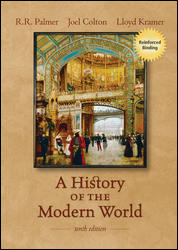
History of the Modern World, 10th Edition (Palmer)Chapter 5: The Transformation of Eastern Europe, 1648-1740Chapter OverviewIn the century following the Peace of Westphalia, the three powers dominating eastern Europe, the Holy Roman Empire, the Republic of Poland, and the Ottoman empire, were pushed aside by three new, more modern powers. Prussia, Austria, and Russia rose to dominate eastern Europe. These three states did not participate in the commercial revolution that transformed social classes in western Europe. Instead, the landed aristocracy retained a strong hold on political and economic life. Serfdom in eastern Europe became more entrenched between the sixteenth and eighteenth centuries even as it disappeared in western Europe. In Austria, the Habsburgs recovered their power, repulsed the Turks, and resolved, albeit temporarily, problems of succession. Prussia soon dominated eastern Europe by cultivating militarism among the Junkers, the Prussian land-owning nobility. In Russia, the early Romanov tsars pursued strategies of absolutism similar to the policies of their western counterparts. Peter the Great pursued the rapid westernization of Russian society, which resulted in a social revolution. All three of the new powers benefited from the partitions of Poland, which unsettled the system of sovereign states recently established by the Peace of Westphalia and shifted the balance of power among European states. |  |















